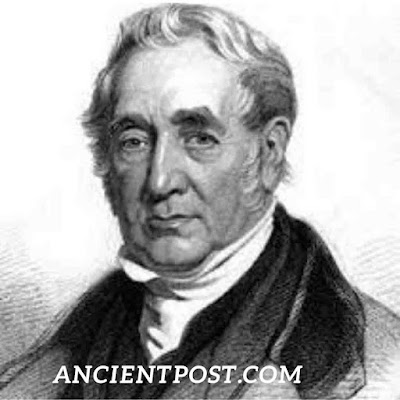Early Life
George Stephenson was an English engineer and the inventor of the railway line, which eventually became the global standard size for all rail tracks and was even called the "Stephenson gauge'. He also created the miners' safety lamp. George Stephenson was born on June 9, 1781, in Wylam, England to Robert and Mabel Stephenson. He was the couple's second child. His father was a fireman and worked in a coal mine. His family was poor and George could not afford to go to school. So, he worked and helped his family earn money. During the nights, he taught himself how to read and write. He then took an interest in mathematics. He worked on a farm and by the time he was ten, he had learned horse riding. At the age of seventeen, he took a job in a coal mine as an engineer. In his next job, he worked as a brakeman. To earn extra money, he took up additional work like repairing shoes and clocks. In 1811, he got a raise at High Pit, Killingworth Colliery, when he fixed a broken pumping engine. He became an expert in steam-driving engineering. He studied machines and engines to develop a better understanding of steam machines. He was always busy conducting different experiments. Stephenson's most significant invention took place at the age of 33. He made his first locomotive in 1814. He used the steam engine which led to its success. The machine was called 'Blucher' and was created to carry coal. It was the first steam engine train that ran on the railroad. It was designed to pull tons of coal up hills and had eight wagons. Stephenson's rail became the most successful steam engine ever built. The first few Blucher rides broke down, but each failure made him improve the design. Each time, he came up with a more powerful engine, and it doubled the amount of coal that could be carried.
He spent most of his life in the coal mines. He thought of an invention which could minimize the risk of explosion. The Royal Society also announced a large reward for the invention of a successful lamp. Stephenson created the safety lamp in 1815. The cylinder lamp had tiny air holes that reduced exposure.
His locomotive steam engine became famous amongst the locals and he soon made more locomotives for Killingworth. In 1820, he built the first railways, which were completely steam- powered. He got a patent for his cast iron rails. He was selected as an engineer to create the Stockton and Darlington railways. In 1825, the first public railways were opened. The first locomotive was named 'Locomotion'. It was the first engine to have a passenger car. The same year, his gauge, used in the construction of tracks, became the world's standard gauge, It was called the 'Stephenson gauge',
Stephenson's Stockton and Darlington rail- way projects were also successful, Before this, the trains were only used to carry coal. The Stephenson railways opened up business for other trades, It became easier to transport cloth or fabrics produced in Manchester to Liverpool. The project was very profitable.
In 1829, Stephenson entered a competition to design a train. Stephenson designed his train called 'Rocket', which won the prize. Soon, his train and railway techniques were adopted by United States too. In 1830, the Liverpool and Manchester Railway was opened to the public. People came from different places to see this new technology. The Prime Minister, the Duke of Wellington was amongst them. Stephenson is one of the few inventors who are greatly remembered for their immense contributions to society that brought about revolutionary changes. The impact of the railroad spread quickly throughout Britain, Europe and North America. Stephenson was offered many projects and continued to build railways for the rest of his life. While he made railways and tracks, he also had to construct tunnels and holes. In the process, he discovered new coal fields which made him even wealthier. He made journeys shorter and contributed to the new industrial age.
Stephenson was married three times and had two children. He was named as 'the Father of the Railways. He died on 12th August, 1848, in Derbyshire at the age of 67.

